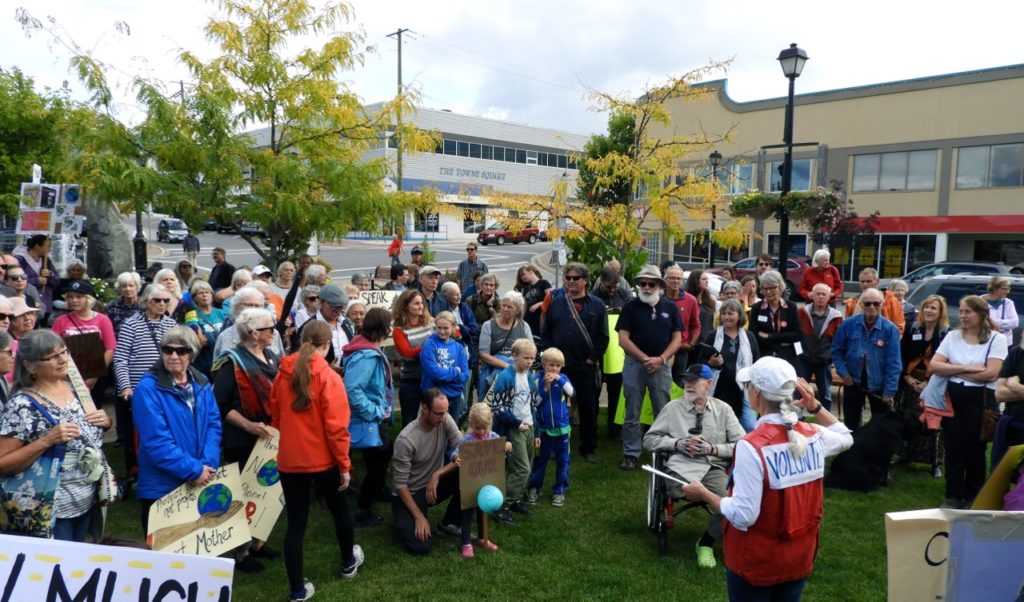My speech to the Climate Strike rally, held Friday Sept. 20th in Salmon Arm in front of the city hall:
There is no doubt we are immersed in a climate crisis, as already we are experiencing the impacts – floods, fires, storms and rising temperatures. Due to the still rising CO2 levels and the activated feedback loops including the release of methane, recent predictions are suggesting that there could be 5 to 6 degree rise in temperature by the end of this century. The big questions for us now are what could we expect to happen where we live, what can we do to protect ourselves and what can we do to make a difference.
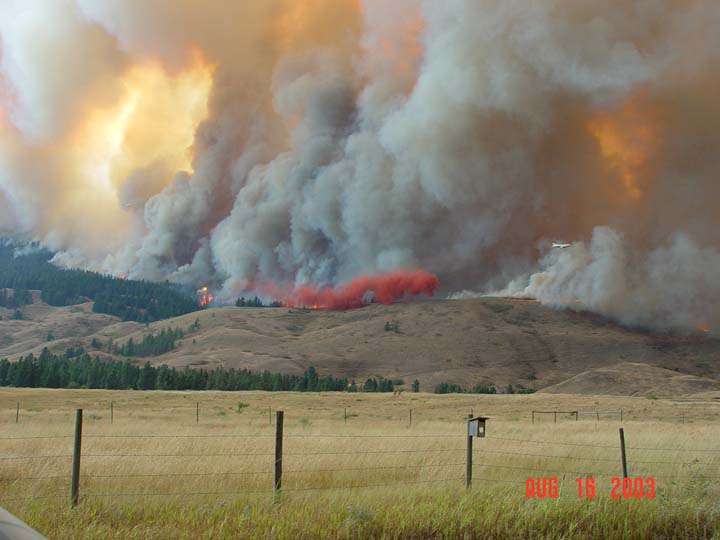 Niskonlith wildfire, August 2003
Niskonlith wildfire, August 2003
The models show that decades from now, the climate here will be like Northern California, which means we could lose many of our forests to shrubs and grasslands. Thus, fire is our biggest threat here in the Shuswap and it is not a question of if, but when we will see another large fire threaten local communities.
There is another warm blob in the Pacific, which may be another reason why this year’s salmon return is so dismal. When climate change is combined with overfishing and fish farming, the demise of the Shuswap’s iconic salmon could come sooner than anticipated.
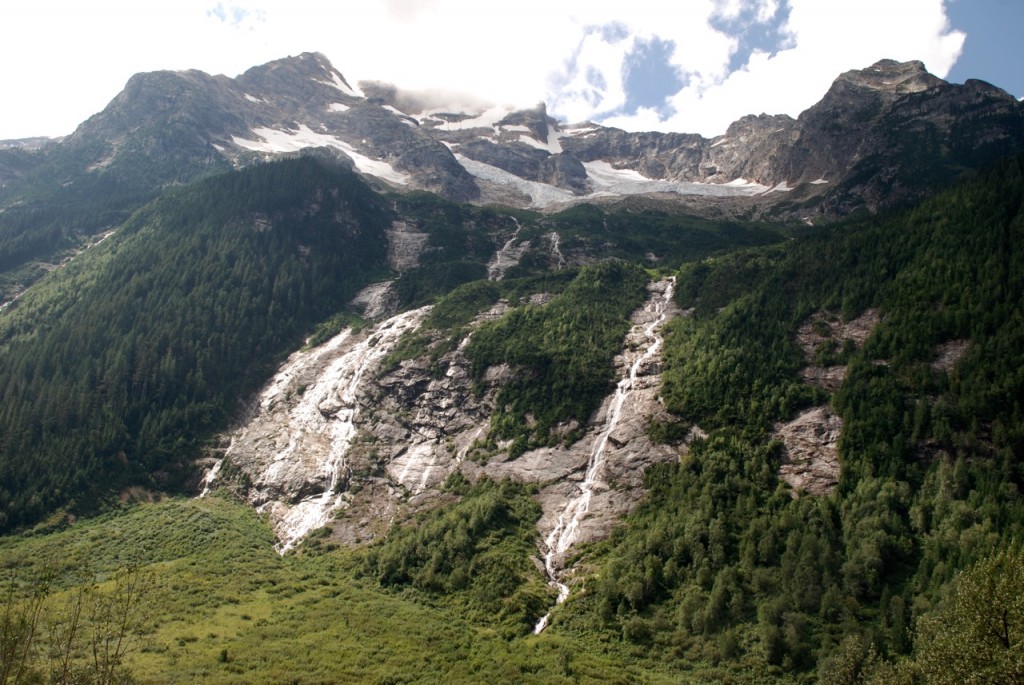 Glaciers visible from the Oliver Creek road above Tum Tum Lake are disappearing
Glaciers visible from the Oliver Creek road above Tum Tum Lake are disappearing
It is not only the glaciers in Greenland and elsewhere that are melting at increasing rates, so are Shuswap’s glaciers. This year, the Adams River changed its course in August when flows should be low, but glacier melt could be increasing the flow. The loss of Shuswap’s glaciers would result in much lower water levels in the fall and less water for communities.
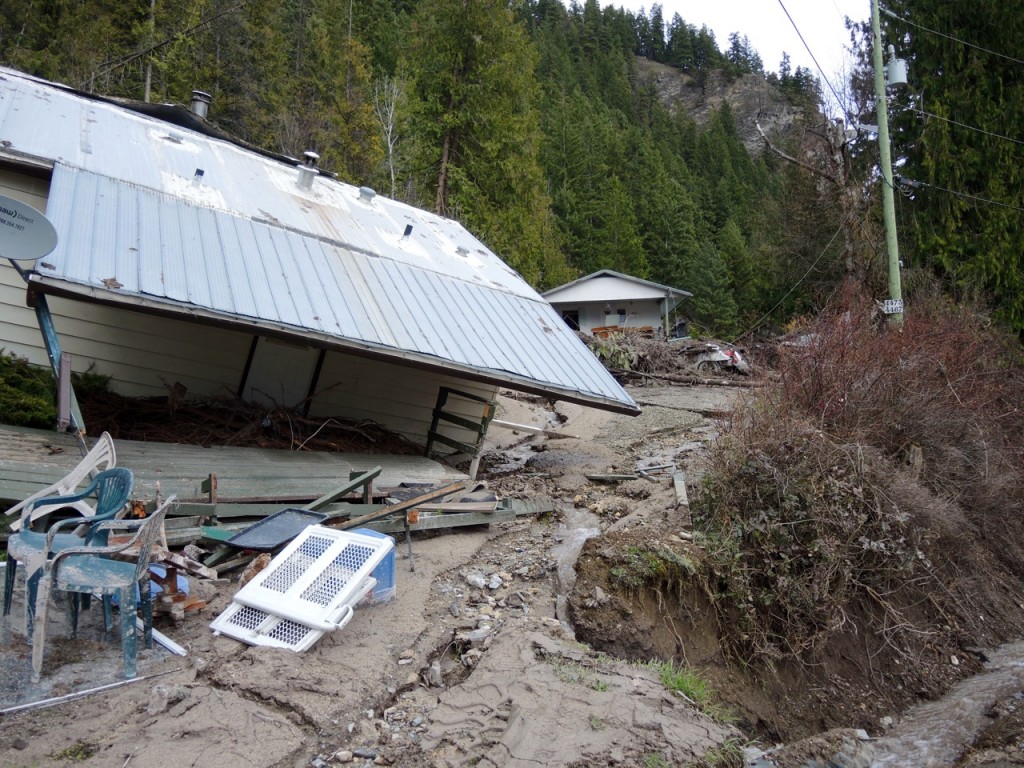 Sunnybrae slide in 2017 at Hardy Creek
Sunnybrae slide in 2017 at Hardy Creek
Another major threat to the Shuswap is from flooding and landslides, due to the increased likelihood of intense storms and precipitation combined with the damage caused by logging, fires and roadbuilding. We have already witnessed such disasters, including those above Mara Lake, Sunnybrae and the North Shuswap. With its upper watershed devastated by a wildfire ten years ago, the rapidly eroding streambanks of Newsome Creek threatens properties in Sorrento.
Perhaps the greatest threats due to climate change are those not yet considered. Germs locked in the melting ice could cause a global epidemic or excessive heat and drought could devastate essential crops leading to malnutrition, disease and starvation.
Some years ago I switched my focus from environmental advocacy to bioregionalism, resulting in the publication of the first book about our region, Everything Shuswap. Bioregionalism, which is a lifestyle dedicated to one’s home place, is one way we can protect ourselves as the planet warms. The more we know about our home place, and the more we cooperate as a community, the better our communities will be able to cope with emergencies.
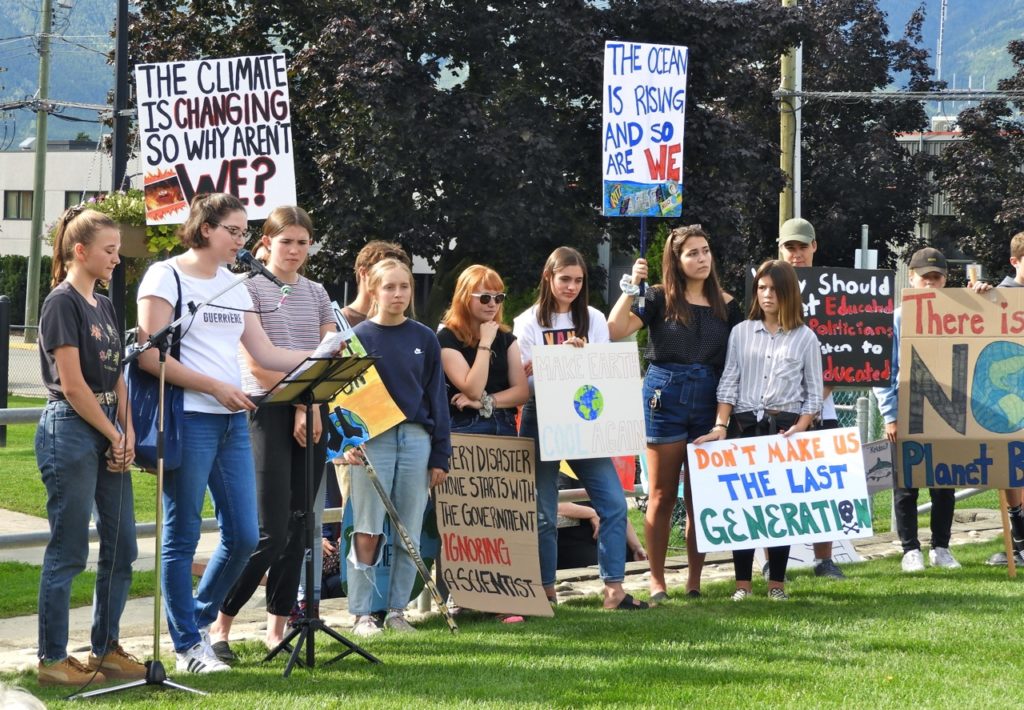 Salmon Arm students at the rally on Sept. 21st
Salmon Arm students at the rally on Sept. 21st
My generation has failed humanity, instead of following the ideals developed in the big era of change during the 1960s and 70s, never-ending greed has led to almost endless wars, no end of pollution, the decimation of species and forests, despot leaders in countries around the world and now the biggest threat to humanity – climate change. Sadly, it is now up to young people to make a difference and thanks to leadership from one young Swedish student, Greta Thunberg, changes may indeed be forthcoming.
Unfortunately, the obstacles to needed change are enormous, given the influence of the wealthy few who continue to profit from carbon pollution. Overconsumption is indeed at the root of the problems and until we see a rejection of the lifestyle that is threatening life on the planet, not much will change.
As long as the planes keep flying and people carry on with their meetings (including climate change conferences!) and vacations, as long as the container ships keep bringing more plastic goods from Asia, as long as we continue to fuel our lifestyles with coal, oil and gas, as long as forests continue to be cut and burned, and as long as the majority of farmland is utilized for meat and dairy – global temperatures will continue to increase. At best, we need to prepare for an uncertain future.
The Salmon Arm Climate Strike rally began at Ross St. Plaza
POSTSCRIPT
Another impact that will be some time into the future will be mass migration. When the oceans flood the coastlines and the heat becomes unbearable south of us, there will be mass migration. The Shuswap could end up with hundreds of thousands of people living here, and one result could be mayhem. Food production will become critical, as it will become difficult to grow food in more southern climates.
The most important activity will be adaptation, as humans will need to find new ways to live on a planet that will be much warmer than it is now. Fireproofing will be key, as will water management. Eventually humans may have to live underground and use solar panels for lighting underground greenhouses. It is difficult to imagine how humans will be able to cope with a planet that is 5 degrees or more warmer than now.
 Climate change has been a concern for longtime environmentalists for decades. In 1993, I was the author of the chapter about Canada in what was then a revolutionary book about clearcut logging called Clear Cut – The Tragedy of Industrial Forestry, edited by Bill Devall. Here is the rather optimistic conclusion to my chapter:
Climate change has been a concern for longtime environmentalists for decades. In 1993, I was the author of the chapter about Canada in what was then a revolutionary book about clearcut logging called Clear Cut – The Tragedy of Industrial Forestry, edited by Bill Devall. Here is the rather optimistic conclusion to my chapter:
“It took a few more years of unusually warm weather, ultraviolet damage to crops and a significant rise in the ocean levels to convince government leaders that real changes were necessary. Carbon taxes were instituted, a reduction in the use of wood and paper resulted from rising costs that reflected the true worth of forests to the planet, and recyling became mandatory. Forests became more valuable for their ability to absorb carbon than for industrial use. To supply the society’s reduced need for paper products, marginal farmland was used to grow hemp, which out-produces trees by four to one. A major national effort was underway to both replant denuded landscapes and restore damaged forest ecosystems. Forest research was successfully re-directed to find better ways to both grow and log uneven aged forests. Clearcutting was restricted to small patch cutting that maintains the ecological integrity of the landscape. A system of large and small protected areas was established with wildlife corridors connecting them. As mills closed, workers found jobs in forest restoration, trail building and eco-tourism. Canadian value-added wood products became world famous and in much demand after First Nations carvers and designers added a creative and unique flair to the industry. As military spending shrank, funds were re-directed to environmental clean-up and ecosystem rehabilitation. Forest planning was directed by local, shared decision-making boards with advice from ecologists and biologists. Canada became known again for its magnificent forests and global catastrophe was averted with the help from both new and old forest ecosystems.”
Regarding climate change and diseases, check out this article
Climate change is one of the greatest threats to global health, experts warn

